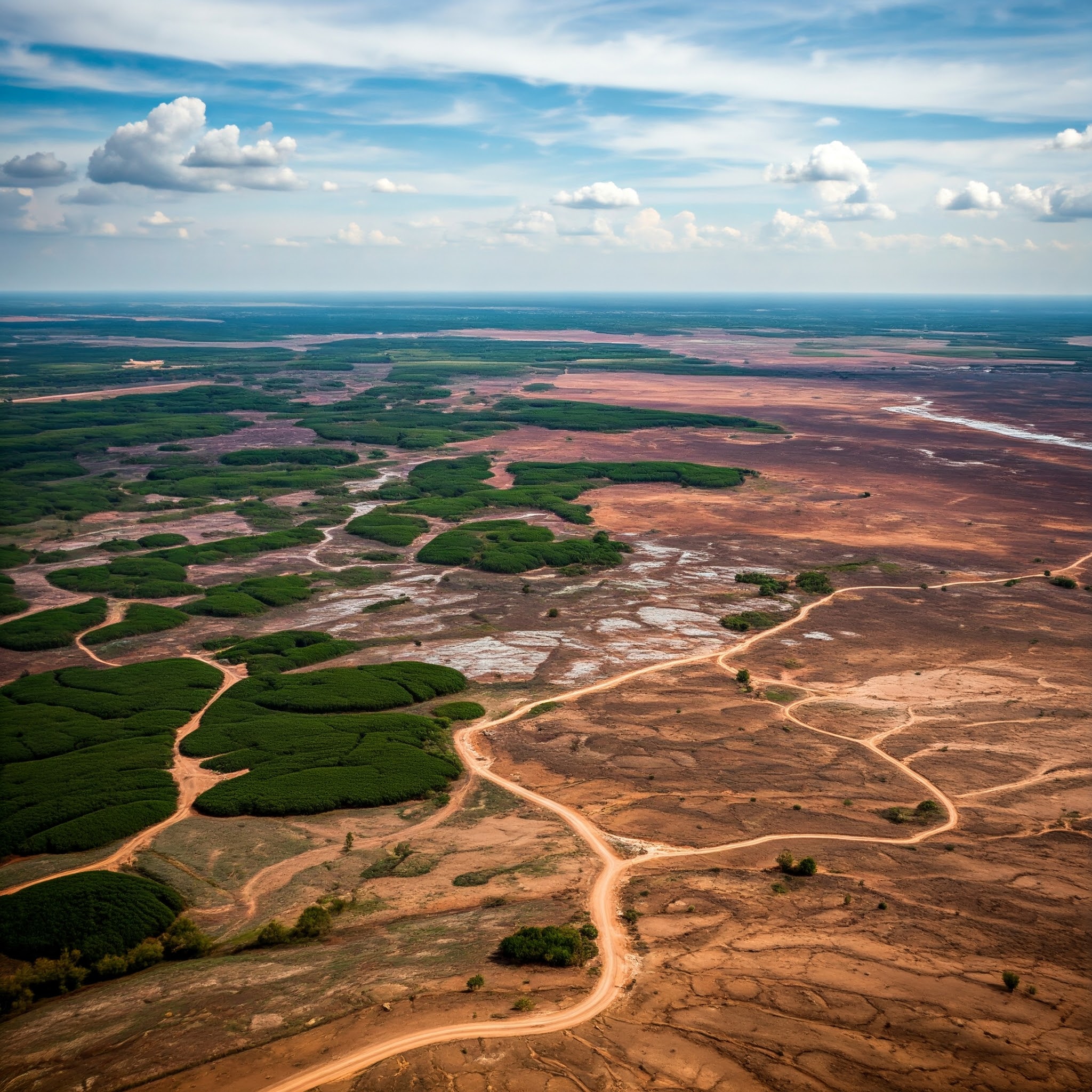The Critical Role of Land Use in Environmental Sustainability
Land use significantly impacts global ecosystems, affecting 7 out of 9 planetary boundaries. Forest cover has shrunk to 60%, and over 15 million km² of land is degraded. Agriculture drives 90% of deforestation and uses 70% of freshwater, contributing to 23% of greenhouse gas emissions. Drylands cover 46% of global land, while freshwater resources are strained with over 50% of rivers disrupted by dams. Climate change has reduced CO₂ absorption by land ecosystems by 20% since 2015. Despite global pledges to halt deforestation, forest loss persists, highlighting the need for urgent, sustainable land management practices.
Key Highlights
Environmental Limits and Ecosystem Stability
- 7 of 9 planetary boundaries impacted by land use, underscoring its central role in Earth systems.
- Earth’s temperature remained stable within a 0.5°C range for 11,700 years, followed by a 1.3°C rise since the mid-19th century.
Forests and Land Degradation
- Global forest cover has dropped to 60%, far below the safe boundary of 75%.
- Over 15 million km² of land is degraded—expanding by 1 million km² annually(more than the size of Antarctica).
- Savannas, covering 20% of Earth’s surface, face threats from cropland expansion and misguided afforestation efforts.
- Despite a 2021 pledge by 145 nations to halt deforestation by 2030, forest loss continues.
Drylands and Water Resources
- Drylands cover 46% of global land and host a third of the population; 75% of Africa is dryland.
- Freshwater constitutes only 3% of Earth’s water, primarily locked in ice caps and groundwater.
- More than 50% of major rivers are disrupted by dam construction.
- 47% of aquifers are depleting faster than they replenish.
Agriculture’s Environmental Impact
- 90% of deforestation is driven by agriculture, with cropland expansion in Africa/Asia and livestock grazing in South America.
- Agriculture contributes 80% to deforestation and uses 70% of freshwater resources.
- Agriculture, forestry, and land use collectively account for 23% of greenhouse gas emissions.
- Fertilizer efficiency for nitrogen (46%) and phosphorus (66%) remains low, with substantial runoff harm.
Pollution and Climate Change
- Over 2,700 national policies address nitrogen pollution; phosphorus pollution remains largely overlooked.
- Climate change has reduced the CO₂ absorption capacity of trees and soil by 20% since 2015.
- Land ecosystems absorb one-third of anthropogenic CO₂ emissions annually.
Genetically Modified Crops and Land Practices
- By 2018, 10% of the world’s arable land was planted with GM crops—dominated by soy (78%), cotton (76%), and maize (30%).
- Soil contains 25% of global biodiversity, critical for sustaining agriculture and ecosystems.
Socioeconomic Factors
- Nature-based solutions receive $200 billion/year in public and private financing, overshadowed by $7 trillion/year for environmentally harmful activities.
- 1 billion people face insecure land rights, with fears of losing land or homes (28% in MENA, 26% in sub-Saharan Africa).
- 1 in 5 people globally paid bribes for land services in 2019; rising to 1 in 2 in sub-Saharan Africa.
- From 2013–2018, over $500 billion in agricultural subsidies across 88 countries fueled harmful practices.
Source: UNCCD

